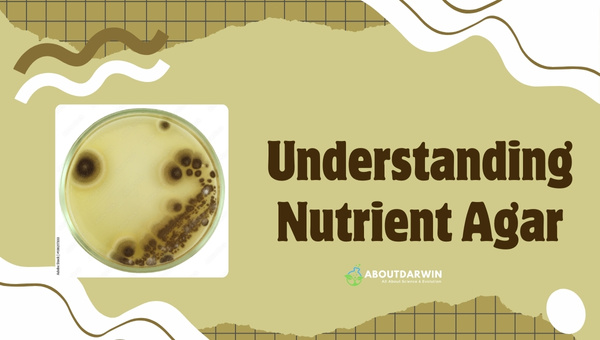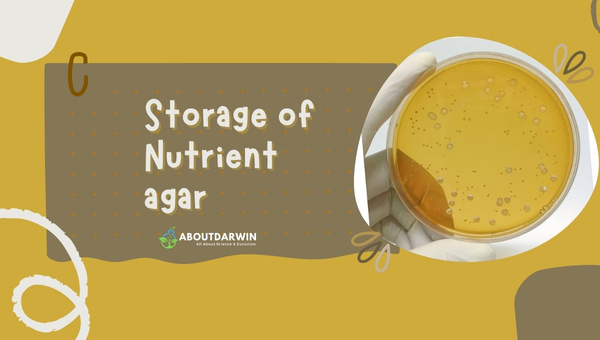Physical Address
304 North Cardinal St.
Dorchester Center, MA 02124
In the realm of microbiology, there are several tools that I find utterly fascinating, and nutrient agar plates rank high among them. The simplicity of these gelatinous substances glosses over their complex role in supporting the growth and visualization of microorganisms.
It’s in this world of invisible lifeforms where nutrient agar proves to be indispensable. Equally intriguing is the process involved in its creation. With such a balance required between nurturing life and ensuring identification, there’s a lot to learn from its composition, preparation, and uses. Let’s dive deeper into this incredible subject!
Contents
If you’ve spent time in a microbiology lab, chances are you’ve encountered nutrient agar. It’s a common sight in my work, and I regularly witness its unsung role in scientific breakthroughs.

Nutrient agar is essentially the unsalted bread and butter of the microbiology world. It accommodates a vast array of organisms, making it invaluable for studies on microorganism growth.
In simple terms, nutrient agar is a type of medium used for growing bacteria or other microorganisms. Its primary function is to provide all the nutrients necessary for these tiny life forms to grow and thrive.
Joining me in any microbiology lab, you would realize that nutrient agars are foundational tools upon which scientists perform diverse experiments. They allow us to isolate different species, observe growth rates, or study antibiotic resistance, among other things.
Many microbiological studies depend on the use of growth media to cultivate and analyze microorganisms. One such medium, which has become a staple in laboratories for its utility and versatility, is crucial for supporting the growth of a wide range of bacterial species. Now, let’s delve into its composition and the role it plays in microbial research.
These components come together, making nutrient agar an ideal field for fostering microbial growth.
Here’s a markdown table listing the composition of nutrient agar.
| Serial No. | Ingredient | Gram/Litre |
|---|---|---|
| 1. | Beef Extract | 3 g |
| 2. | Peptone | 5 g |
| 3. | Agar | 15 g |
| 4. | Distilled Water | 1000 ml |
This indicates that to prepare a liter solution of nutrient agar, we need to add the specific grams or milliliters of each ingredient, as displayed in column three.
Also Read: Earth’s Geomagnetic Reversal: The Phenomenon of Polarity Flip
The process of preparing nutrient agar is simple, like baking a cake, only this one’s for microorganisms and in a lab setup.
The steps are written right below :
With these steps, you’ve successfully prepared wholesome meals for your microbes!
Also Read: Acid-Fast Stain Revealed: Unveiling Microbial Secrets
Nutrient agar plays an indispensable role not just in my laboratory routine but also in the far-reaching corners of microbiological research. It’s such a versatile tool, with its uses ranging from simple school experiments to high-stakes pharmaceutical studies.
Some applications are mentioned here :
You can go these cases for more detailed information :
Nutrient agars are employed to study the susceptibility of bacteria to different antibiotics.
In a mixed culture experiment, multiple bacterial species growing on an agar plate can be segregated into pure cultures for further study.
These instances only scratch the surface; the versatility and adaptability of nutrient agars are truly unbounded.
Proper laboratory practice includes the preparation and storage of media that are essential for the cultivation of microorganisms.

The protocol for maintaining the efficacy of this media is crucial for accurate microbial growth and identification. Here we discuss the guidelines for storing one such common growth medium.
Remember, always label your stored media with the date of preparation, type of media, and your initials for traceability.
Also Read: Mastering Polymerase Chain Reaction: Principle & Application
While nutrient agar is popular, alternatives like Sabouraud Agar or MacConkey Agar can be used depending on the specific type of microorganism you’re trying to grow.
Generally, handling nutrient agar isn’t unsafe. However, it’s crucial to adhere to all laboratory safety guidelines as the grown microbes could potentially be harmful.
Yes, technically you can. But remember, the need for precise measurements and sterilization makes this challenging without proper laboratory equipment.
Prepared plates can typically be stored for around two weeks in a refrigerator before use. But once there are signs of moisture loss or contamination, discard them immediately.
Also Read: Unraveling Potato Dextrose Agar (PDA): Principle & More
As we come to the end of our deep dive into nutrient agar, it’s clear that this unsung hero of the lab defines much of our modern understanding in microbiology and other related fields. It’s this simple yet indispensable tool that fosters the growth and life of countless microorganisms for our studies.
So next time you see a petri dish flourishing with colonies, remember that beneath that layer is nutrient agar – silently feeding, hydrating, and nurturing those tiny life forms to help us uncover some pretty big discoveries.